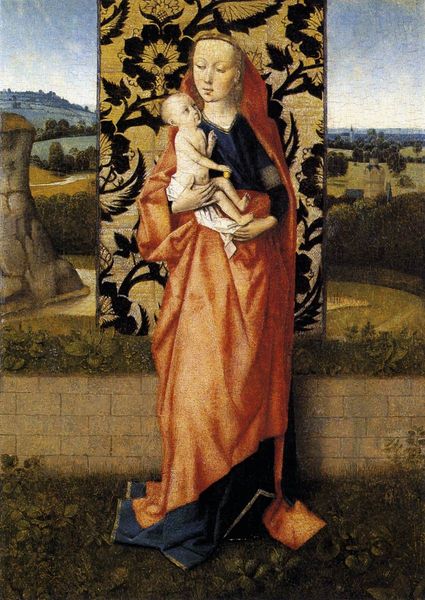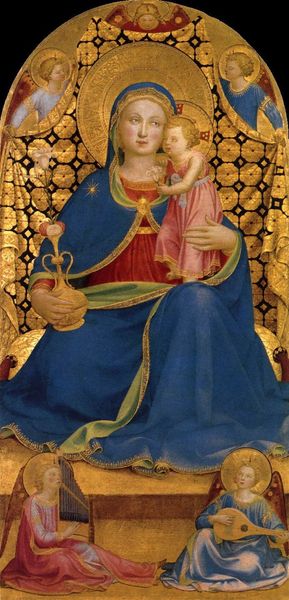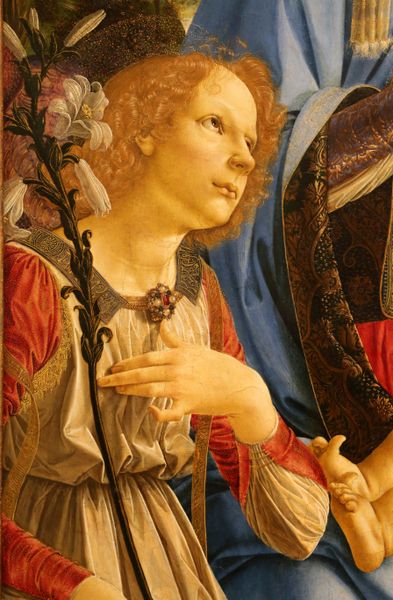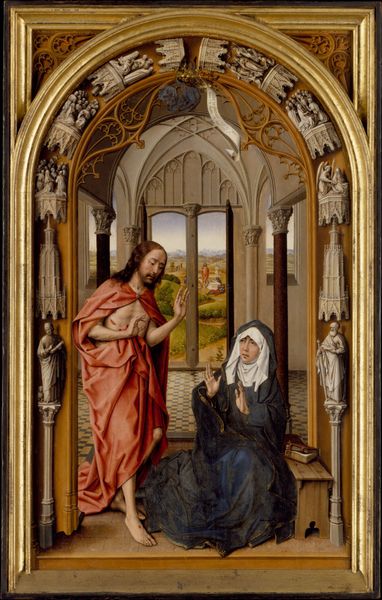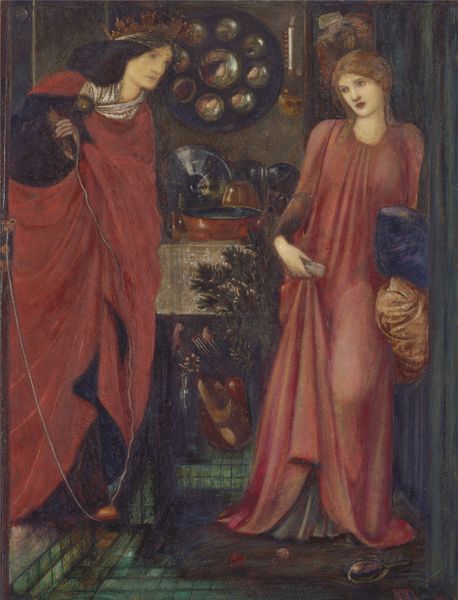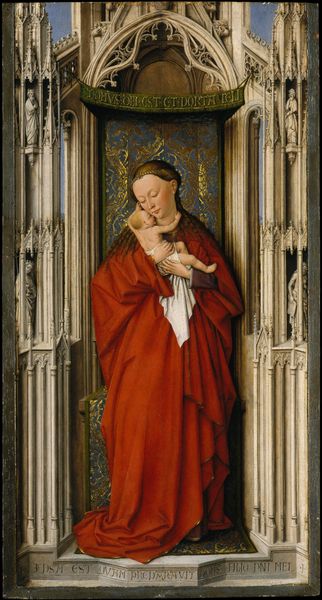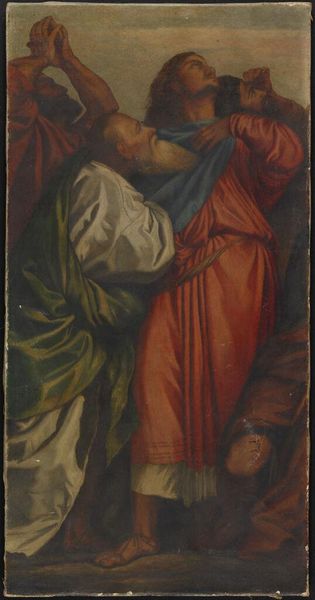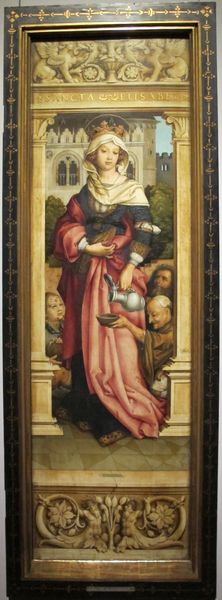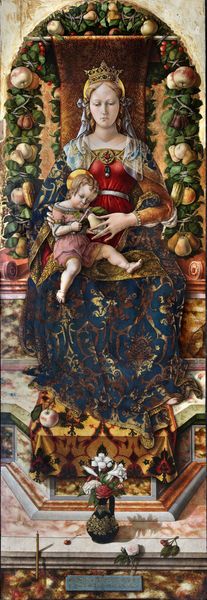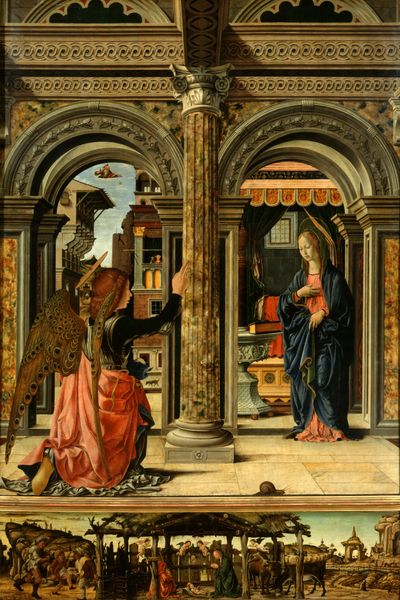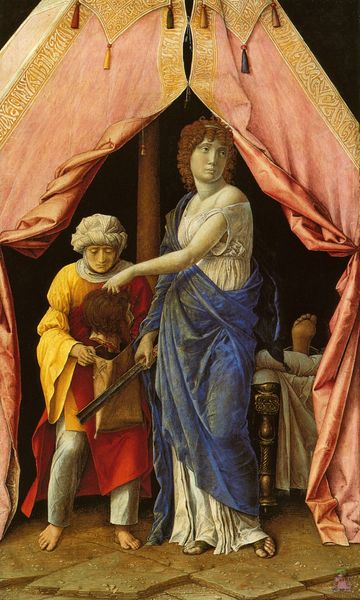
panel, oil-paint
#
portrait
#
panel
#
oil-paint
#
figuration
#
oil painting
#
child
#
christianity
#
history-painting
#
italian-renaissance
#
virgin-mary
#
realism
Dimensions: 19 x 22.2 cm
Copyright: Public domain
Curator: Let’s explore Jan van Eyck's "Madonna at the Fountain," an oil on panel created in 1439. Editor: Immediately, the overwhelming blueness strikes me, almost oppressive in its saturation. What a contrast it creates against the fair skin of Mary and the infant Jesus. Curator: Precisely. Van Eyck masterfully employs color to draw the eye and create visual hierarchies. Note how the Virgin's robe dominates the composition, cascading like a waterfall. The texture achieved with oil paint allows for light to play across every fold. Editor: And the detail. I can practically smell the roses climbing on the back wall and it begs the question: why frame the archetypal Mother and Child with a tapestry of all things? Surely, it isn’t just ornamentation; I’m guessing this relates to the burgeoning merchant class of the time. Curator: An astute observation. The tapestry, rendered with incredible detail, would have signaled luxury and status, indicative of Van Eyck's patrons and reflecting the social climb within Burgundian society. Moreover, look closely at the halos—almost imperceptible, as though the artist suggests piety without being overly demonstrative, unlike artwork from centuries before. Editor: That feels… revolutionary. Van Eyck has moved us away from symbolic representation and further toward humanism. But I keep circling back to that fountain to the left of Mary. Water, life-giving and sacred, almost feels like a visual argument for feminine power, right? The Virgin as not just a vessel, but the source. Curator: Perhaps, but equally, the fountain itself acts as a perspectival anchor, aligning us to a central vanishing point within the composition that privileges classical techniques and the development of realism during the Early Renaissance. The painting isn't merely narrative, it is an optical feat of technical advancement and devotion. Editor: Well said. It feels like this panel is about the rise of women, wealth and optics – a potent triptych. Curator: A wonderful summary. Indeed, each viewing reveals fresh layers to consider.
Comments
No comments
Be the first to comment and join the conversation on the ultimate creative platform.

